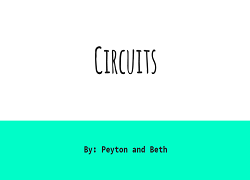This lesson is for : Grade 4:
Summary
With just the definitions of series and parallel circuits and their prior knowledge of electricity, students constructed circuits using the given materials (wires, bulbs, batteries). Students worked in pairs to construct circuits using the given materials. Students used thier iPad and a Google Slide presentation document their success and reflect on reasons why their circuits were successful. With this base of knowledge students used AR Circuits – Augmented Reality Electric Circuit Kit an app on their iPad to construct both series and parallel virtual circuits.
TIPC Ratings
Research & Information Fluency
Rating: Entry – Explanation: Students acquired information using provided resources.They followed teacher direction to complete class assignments. Respond to, but do not extend teacher prompt.
Communication & Collaboration
Rating: Approaching – Explanation: Students assessed their authentic task in a variety of ways including verbal whole group and partner discussions/demonstrations, created videos to demonstrate their thinking with classmates, and completed a Google Slide reflecting on their findings which was then shared with the class. They also collaborated with other partners in the class to help them problem solve how to make successful circuits
Critical Thinking & Problem Solving
Rating: Ideal – Explanation: Teachers posed questions and gave many different learning opportunities (hands-on circuit exploration and Virtual reality circuits) for students to problem solve how to design specific circuits. The students were only given the definition of a series and parallel circuit, vested with this knowledge students were then given a battery and wired lights and they had to create and photograph their circuits When students were unsuccessful with creating a working circuit, teachers proposed questions to facilitate their thinking. Students generated their own questions after experimenting with circuits, which were answered by their own experimenting (ex: Part 3). They also answered questions related to their learning during group discussions, as well as on a Google Slide where they were charged with explaining what type of circuit it was. Finally, students were given paper printed materials that allowed to to create virtual reality circuits.
Creativity & Innovation
Rating: Ideal – Explanation: Teachers did not set a parameter for experimentation. Students made hypotheses and drew conclusions based on their own creativity. For example, when posed with the task of lighting a light bulb up, some students solved the problem using materials not given in the baggie- for example: students connected wires to the metal on the pencil eraser instead of using the wires provided. Students were given unlimited freedom to create circuits with many and varied materials.





